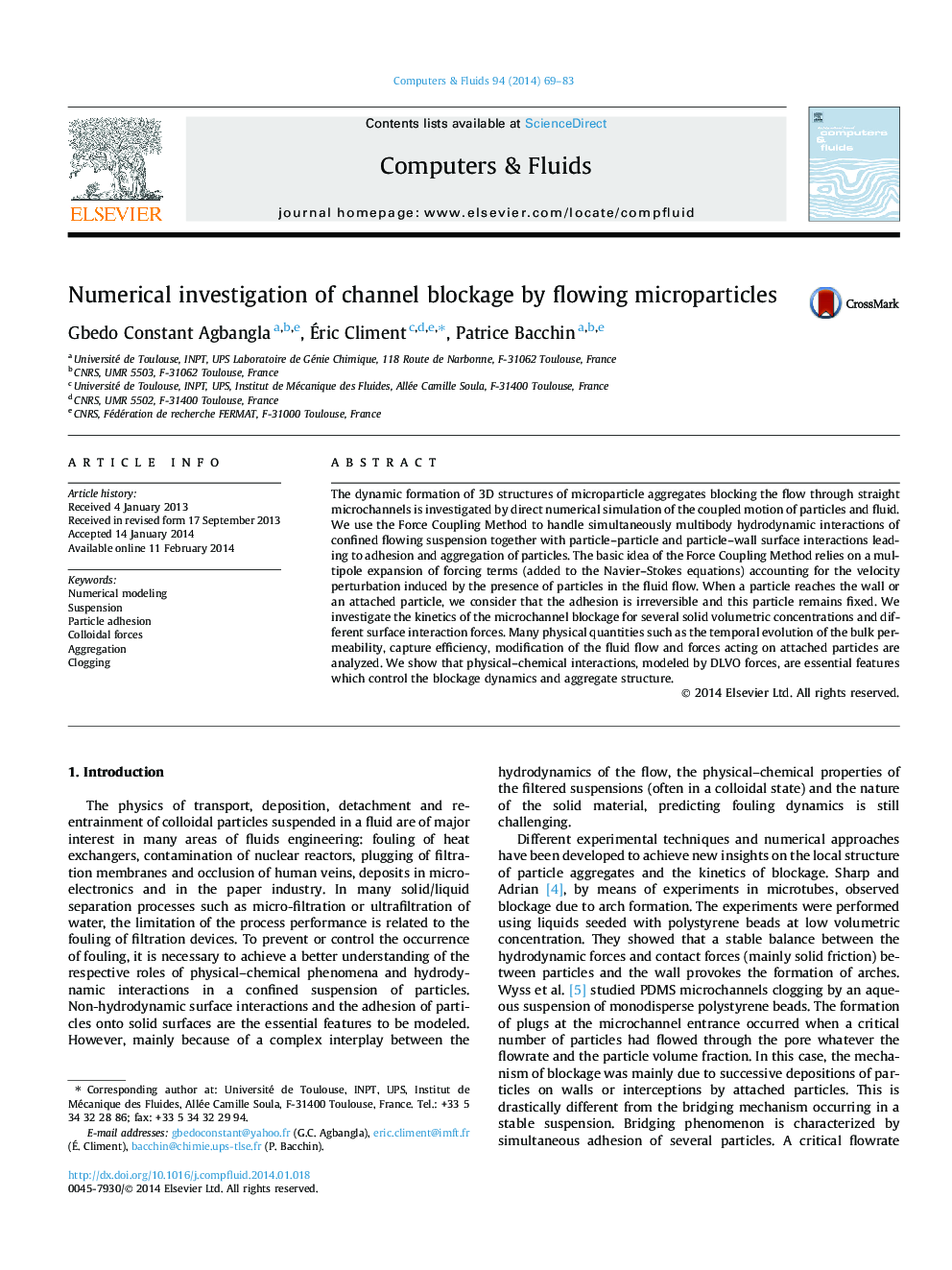| Article ID | Journal | Published Year | Pages | File Type |
|---|---|---|---|---|
| 761780 | Computers & Fluids | 2014 | 15 Pages |
•Numerical modeling of microparticle deposition onto microchannel walls.•Dentritic/cluster/monolayer/multilayer structures of particle deposition.•Hydrodynamic multibody interactions and non-hydrodynamic interparticle forces.•Comparison of results for various suspension properties.
The dynamic formation of 3D structures of microparticle aggregates blocking the flow through straight microchannels is investigated by direct numerical simulation of the coupled motion of particles and fluid. We use the Force Coupling Method to handle simultaneously multibody hydrodynamic interactions of confined flowing suspension together with particle–particle and particle–wall surface interactions leading to adhesion and aggregation of particles. The basic idea of the Force Coupling Method relies on a multipole expansion of forcing terms (added to the Navier–Stokes equations) accounting for the velocity perturbation induced by the presence of particles in the fluid flow. When a particle reaches the wall or an attached particle, we consider that the adhesion is irreversible and this particle remains fixed. We investigate the kinetics of the microchannel blockage for several solid volumetric concentrations and different surface interaction forces. Many physical quantities such as the temporal evolution of the bulk permeability, capture efficiency, modification of the fluid flow and forces acting on attached particles are analyzed. We show that physical–chemical interactions, modeled by DLVO forces, are essential features which control the blockage dynamics and aggregate structure.
